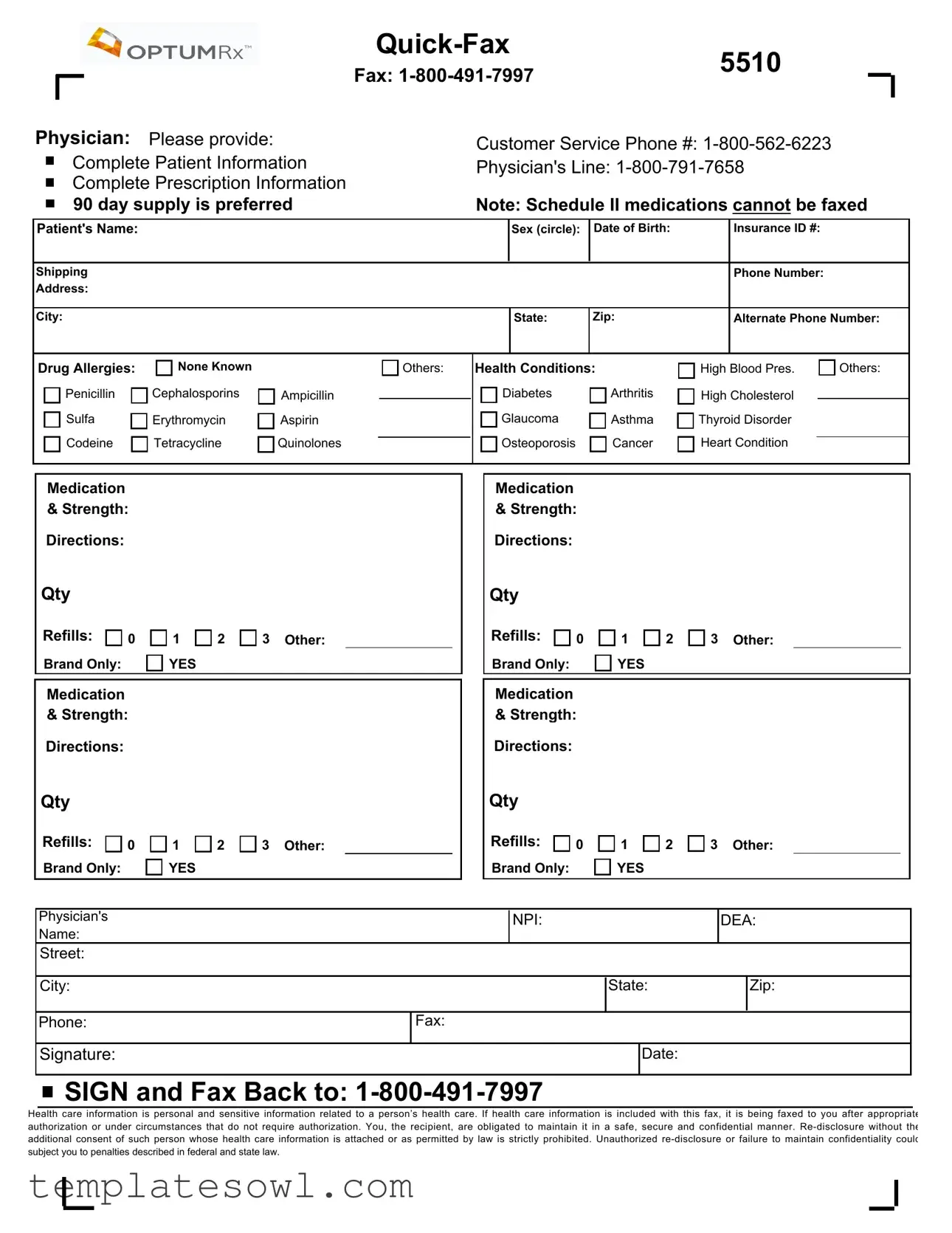What is the Optumrx Prescription Fax form used for?
The Optumrx Prescription Fax form is utilized by healthcare providers to send prescriptions directly to a pharmacy. This process helps ensure that patients receive their medications efficiently. The form collects essential patient and medication information, allowing for a streamlined method of prescribing and potentially decreasing wait times at the pharmacy.
How should the Optumrx Prescription Fax form be filled out?
When filling out the form, it’s important to provide complete patient and prescription information. Essential details include the patient's name, date of birth, and insurance ID number. The form allows for multiple medications, so ensure each medication entry includes the medication name, strength, directions, quantity, and preferred refills. Filling out all sections accurately helps prevent delays in processing the prescription.
What are some key considerations when using the Optumrx Prescription Fax form?
First, it’s crucial to note that Schedule II medications cannot be faxed. The form prefers prescriptions for a 90-day supply, promoting better medication management for chronic conditions. Additionally, be aware of any patient allergies and health conditions that should be communicated to the pharmacy. This information is valuable in preventing harmful drug interactions and ensuring patient safety.
What should I do if I encounter issues while faxing the form?
If you run into difficulties when faxing the Optumrx Prescription Fax form, it’s wise to contact Optumrx customer service at 1-800-562-6223. The dedicated team can assist with any questions or concerns regarding the faxing process. If the fax does not go through, waiting a few moments and trying again can often help, as busy phone lines may cause temporary delays.
How is patient confidentiality maintained when using the Optumrx Prescription Fax form?
Patient confidentiality is of the utmost importance when using the Optumrx Prescription Fax form. The form includes a note reminding healthcare providers that health information must be handled securely and confidentially. Recipients of the fax are obligated to treat the information in a private manner and are prohibited from unauthorized re-disclosure. These guidelines help protect sensitive health information, ensuring compliance with federal and state laws.


 SIGN and Fax Back to:
SIGN and Fax Back to: